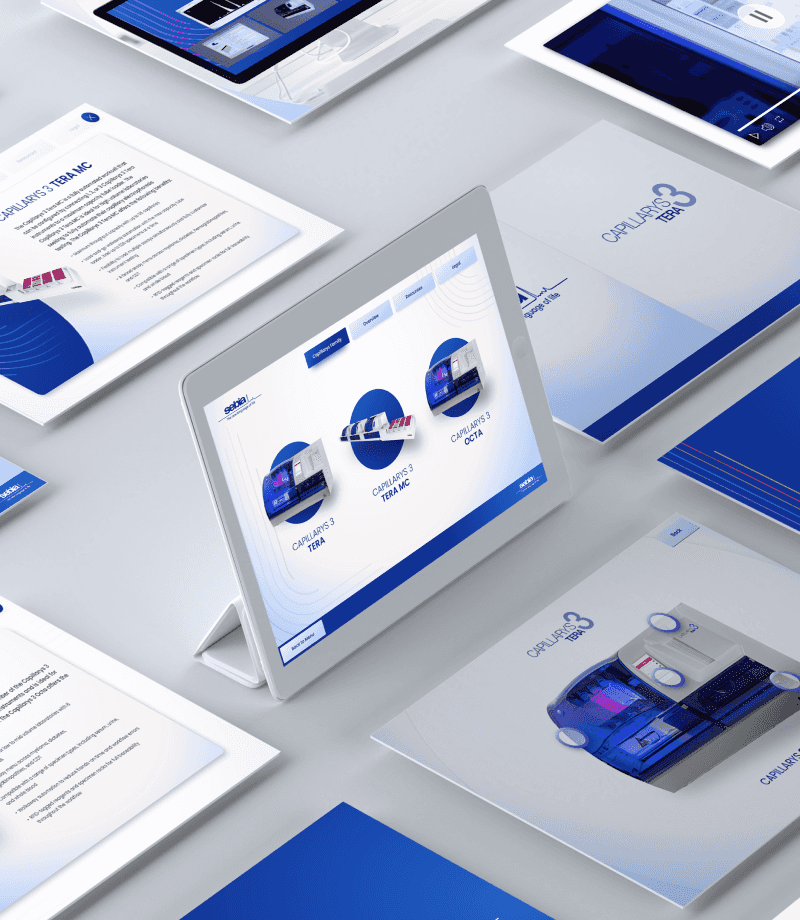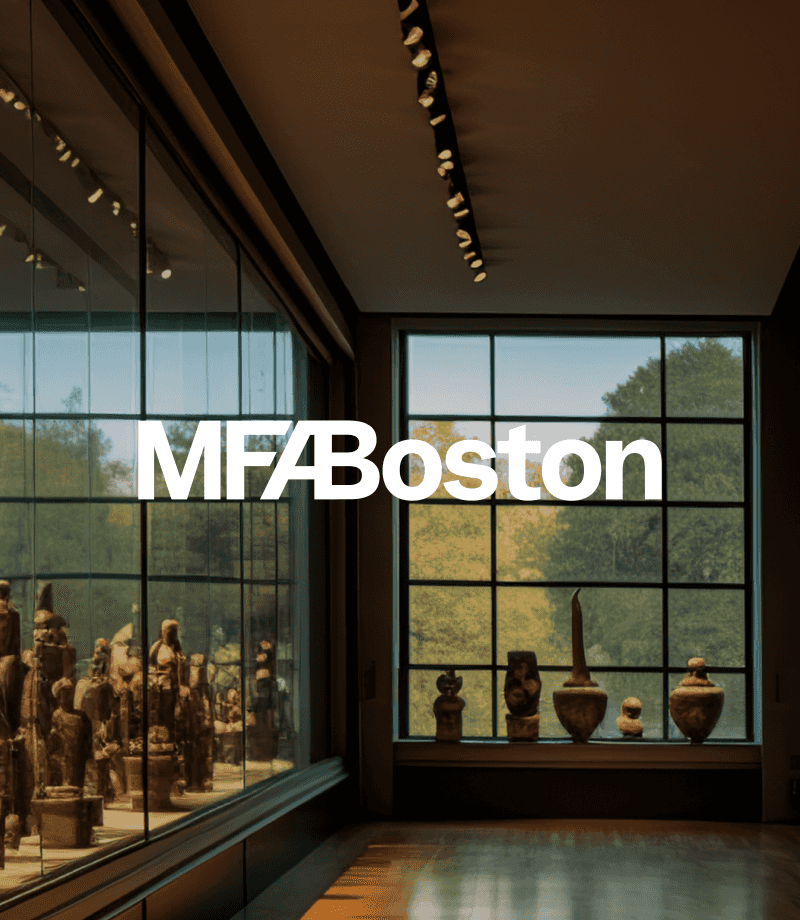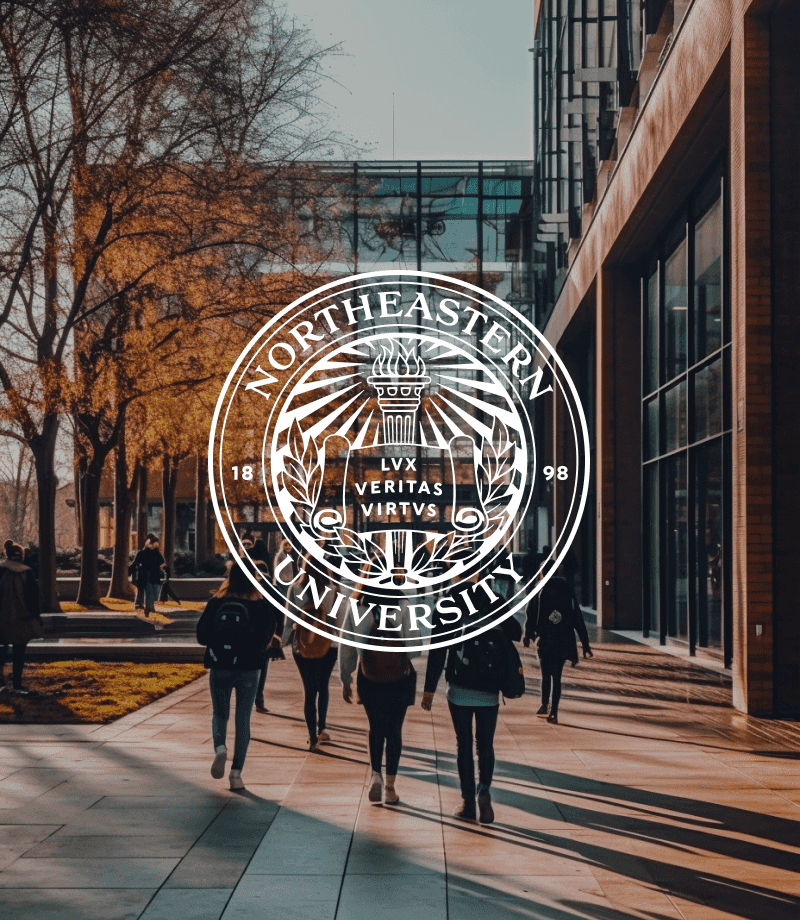Developing a Massive Touch Screen Exhibit
- Hardware Integration
- Software Development
- Technical Consulting
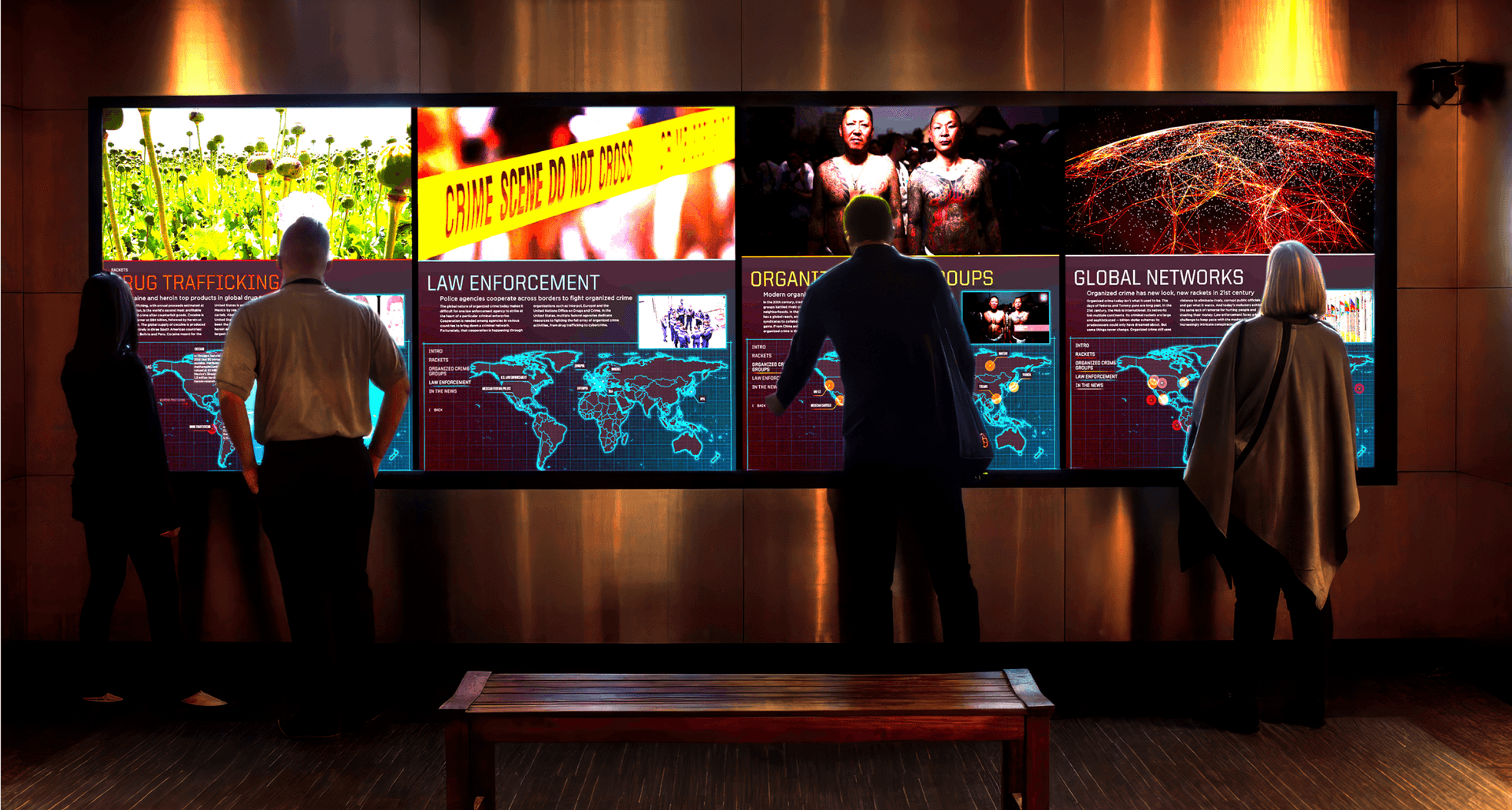
(01)The Challenge
Visualizing the History of Organized Crime
The Mob Museum in Las Vegas needed a unique way to grab visitors’ attention while illustrating the complex evolution of organized crime groups from around the world. For such an exhibit, they envisioned a massive touchscreen display of interactive media content, but weren’t sure how to accomplish this technically, let alone create a unified layout that would allow for multiple users at once.
Not only did the museum need a way to create a coherent display, but they were tasked with the challenge of updating the exhibit. Museum visitors, particularly repeat visitors, expect up-to-date information at the exhibits, so content editors needed a simple and fast way to publish current stories to the display at a moment’s notice.
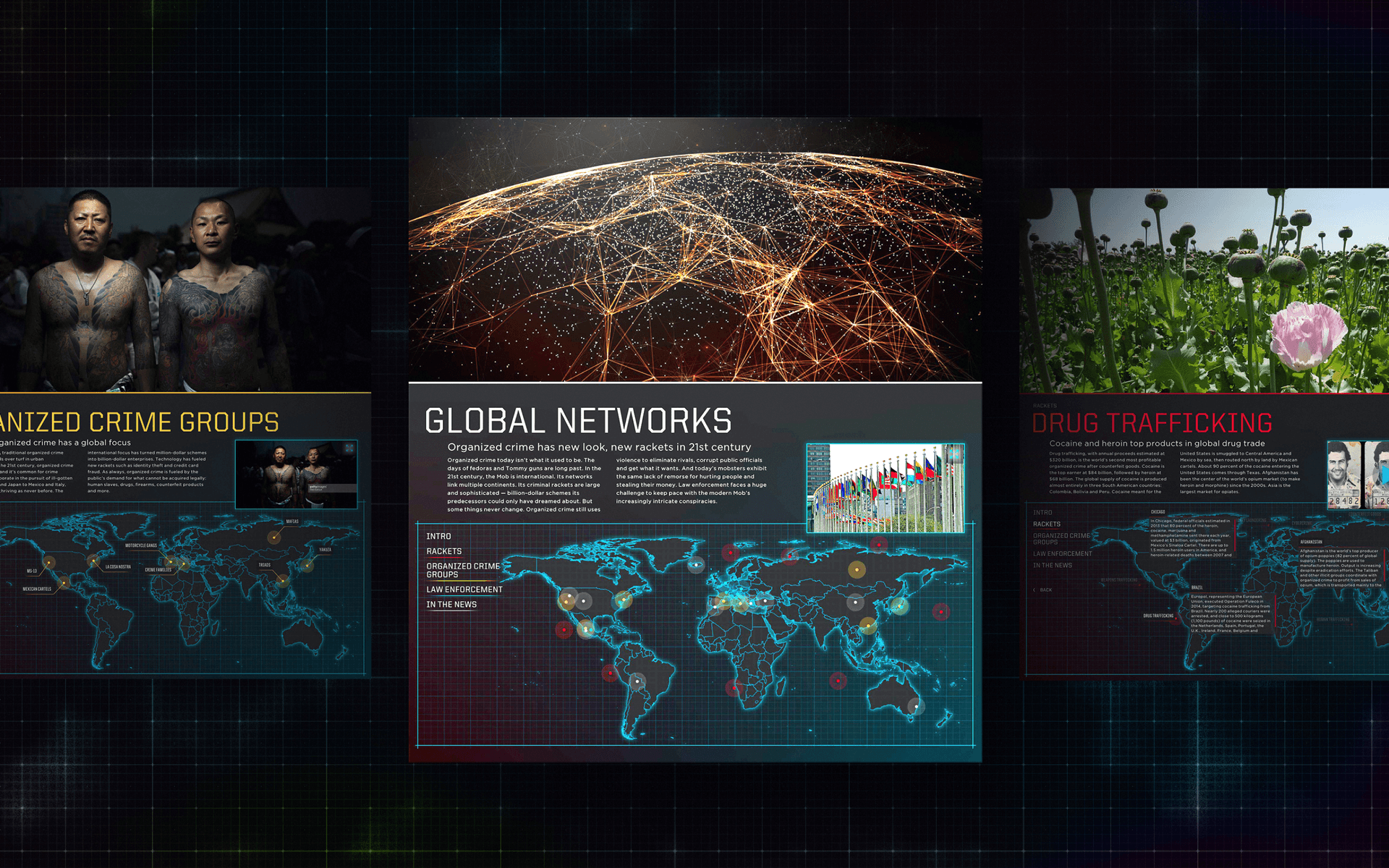
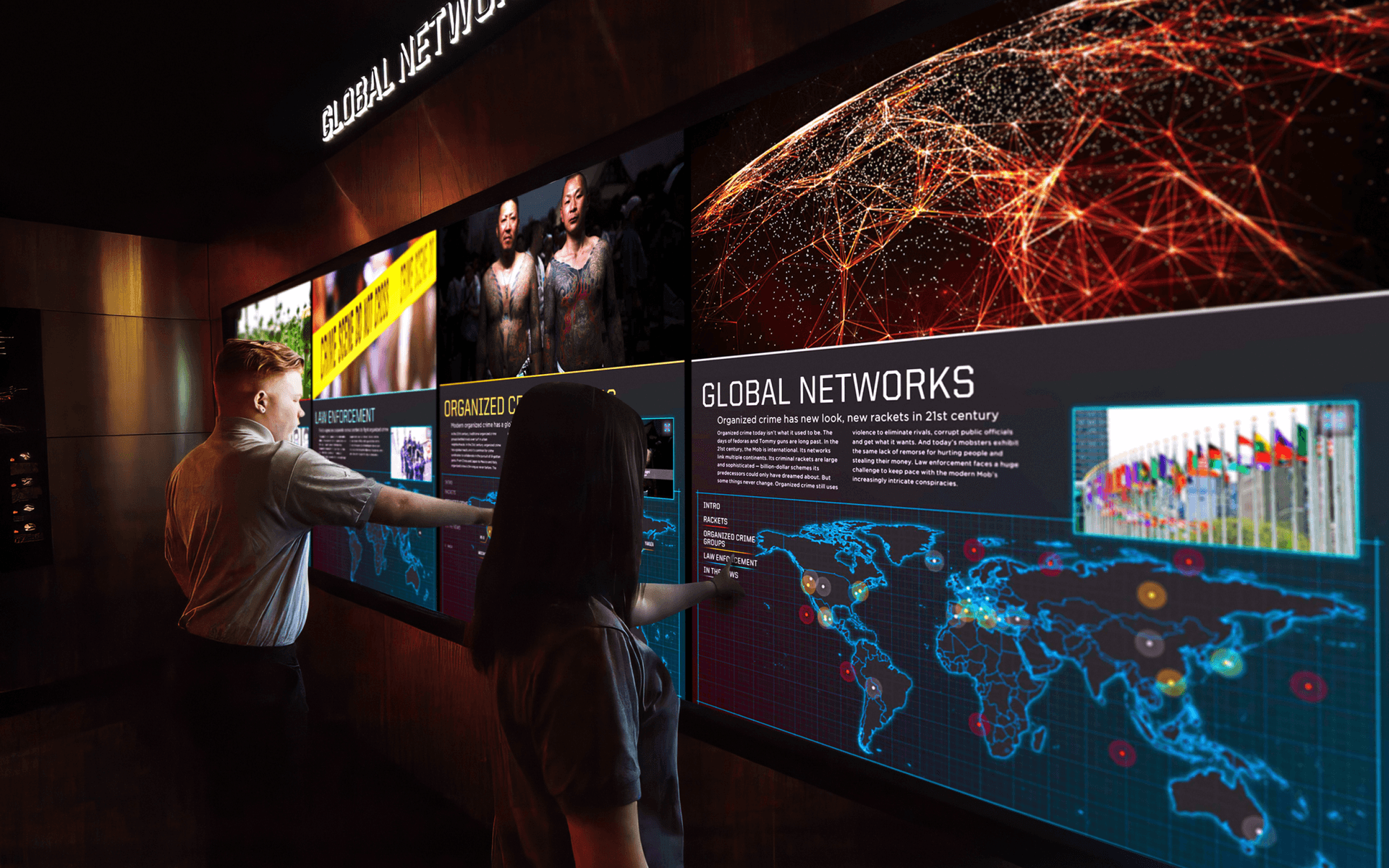
(02)The Goal
A User-Friendly Display that Keeps Visitors Entertained and Informed
The Mob Museum needed our help to make an interactive and engaging display that would provide visitors with fascinating visuals and current information. Using eight 55″ screens, the goal was for the exhibit to be cohesive, user-friendly, and keep audiences immersed in the history of organized crime. We also needed to develop a way to easily update the exhibit’s content.

(03)The Solution
A Compelling and Accessible Exhibit Experience
With the successful collaboration between Northern Light Productions, Fast Forward, and The Mob Museum, the “Global Networks: Organized Crime Today” exhibit was unveiled in 2017 to great acclaim. The solution seamlessly combined technical sophistication with a user-friendly interface. Our team delivered a familiar smartphone app-style navigation, which enables museum visitors to explore the content intuitively.
The centerpiece of the exhibit is a striking 17-foot wide video wall, featuring eight 55″ LCD screens in a four-wide, two-high format. The interactive display provides an in-depth exploration of the history of organized crime, presented through captivating headlines, informative text, enthralling photographs, detailed maps, and compelling video clips. Its user-friendly interface and responsive touch controls give visitors a smooth experience, whether standing or seated in a wheelchair, meeting ADA accessibility requirements.
The collaboration with the museum’s content editors was made effortless as Fast Forward integrated the exhibit’s software with WordPress using a headless CMS architecture. The WordPress REST API facilitates the downloading and caching of all text, images and videos, ensuring that the content is always up-to-date and visually impressive, even with the exhibit’s 8k resolution.
“Global Networks: Organized Crime Today” remains a highlight of The Mob Museum today, captivating visitors from around the globe. The display continues to evolve with regularly updated stories and content, keeping it fresh and engaging for all guests.
(04)Technical Notes
Speed and Flexibility With a Headless CMS
Like many of the projects we do, Fast Forward was tasked with developing a technical solution to meet all the design goals and support the exhibit hardware. We knew that the museum already ran on WordPress, so it was the logical choice for this exhibit’s content management system. However, the audio and video requirements were incredibly advanced, so much so that a web application wouldn’t be able to deliver. Our solution was to implement a headless CMS architecture. This allowed us to build the user interface in Unity, a powerful 3D game engine, while giving the content editors a familiar experience in WordPress. With a plan in place for content management, we could then focus on the hardware.
The display consists of eight 1920 x 1080 screens, forming a single canvas of 8640 x 1920 pixels. It needed to support full-frame video playback, as well as several independent videos playing simultaneously. This requires a computer with a specialized video card. The team a Fast Forward worked closely with the AV integration team to spec and build a computer capable of driving the exhibit’s 8 HDMI outputs at 60 fps.
A 32-point multi-touch, monolithic glass overlay from PQ Labs covers the surface area of the display. Special consideration has to be taken whenever multiple users interact with the same screen. In this case, there could be 32 touches at once. Visitors needed to be able to collaborate, but also not get in each other’s way. Having worked with this technology for several years, we were able to advise the design team on best practices.
The room was split into four audio zones, each with overhead stereo speakers. This enables visitors to be able to focus on the video they chose to play, not that of their neighbor. This required writing custom audio drivers to route sounds to the individual zones.
When working with high-resolution displays, file size can be an issue. With a screen of this size, web-encoded videos wouldn’t be good enough. So, we often look to uncompressed formats. However, we also don’t want to bog down the museum network by transferring gigabytes of data every time a visitor wants to watch a video. This is another strength of our headless CMS architecture. The front end application will download and cache all display assets on the computers’ hard drive. As content is updated, only the changes get downloaded. This greatly reduces network traffic and the display will still work even if the internet connection is lost.
A headless CMS is a powerful and flexible tool. By separating the content layer from the presentation layer, Fast Forward developers are able to innovate quickly. Most importantly, we were able to create the best experience for content editors and museum visitors alike at The Mob Museum.
